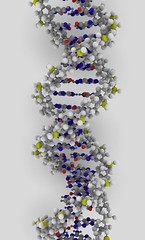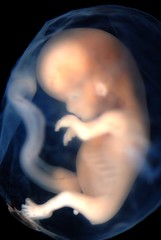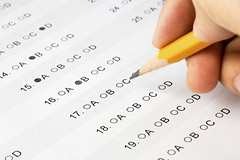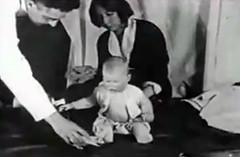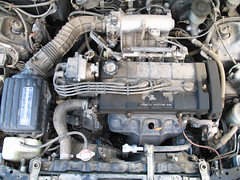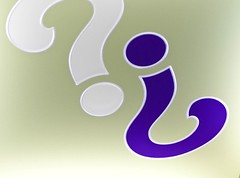| 4742840268 | Risk Factors | The preferred terminology compared to causes. They are variables correlated with an abnormal outcome | | 0 |
| 4742843803 | Necessary Cause | A condition that must exist for a disorder to occur. If Y occurs, then X much have preceded it | | 1 |
| 4742847197 | Sufficient Cause | A condition that guarantees the occurrence of a disorder. If X occurs, then Y will also occur. A sufficient cause may not be a necessary cause | | 2 |
| 4742848927 | Contributory Cause | Increase the probability of a disorder developing but is neither necessary nor sufficient for the disorder to occur. If X occurs, then the probability of Y also occurring is increased. | | 3 |
| 4742851762 | Distal Casual Factors | Occur relatively early in life and may not show their effects for many years, but they may contribute to a predisposition to developing a disorder. These usually set up vulnerability for later in life. | | 4 |
| 4742854087 | Proximal Casual Factors | Operate shortly before the occurrence of the symptoms of a disorder. It may be a situation that is too much for a person to handle and triggers the onset of a disorder or it might involve biological changes (brain damage) | | 5 |
| 4742857250 | Reinforcing Contributory Cause | Condition that tends to maintain maladaptive behaviour that is already occurring | | 6 |
| 4742859217 | Casual Pattern | More than one casual factor is involved. Feedback and other influences need to be taken into account here. | | 7 |
| 4742863274 | Diathesis | A predisposition for developing a disorder. It can derive from biological, psychological, or sociocultural casual factors. Can result from distal necessary or contributory causes along with multiple proximal events/stressors which may be contributory or necessary. | | 8 |
| 4742864628 | Diathesis-Stress Model | Belief that mental disorders are to develop when certain stressors act on a person who has a diathesis or vulnerability for a particular disorder. | | 9 |
| 4742868034 | Additive Model | How a diathesis and stress can combine to cause a disorder. The level of diathesis (high or low) requires different amounts of stress for a disorder to develop | | 10 |
| 4742870170 | Interactive Model | Some amount of diathesis must be present in order for a disorder to develop. If a person does not have a diathesis for a specific disorder, then they cannot develop it regardless of how much stress they encounter. | | 11 |
| 4742873205 | Protective Factors | Influences that modify a person's response to environmental stressors, making it less likely that the person will experience the adverse consequences of the stressors. Operate only to help resist against the effects of a risk factor (no benefit to people who do not have risk factors). | | 12 |
| 4742875545 | Resilience | Ability to adapt to difficult circumstances. Protective factors contribute to a persons resilience. | | 13 |
| 4742878749 | Multi-Casual Developmental Models | During a child's development they may acquire a variety of cumulative risk factors that may interact in determining their risk of abnormal behaviour. These risk factors interact with protective processes and stressors and determine if the child will develop a disorder | | 14 |
| 4742882138 | Developmental Psychopathology | Focuses on determining what is abnormal at a given point in development by comparing/contrasting it with the normal/expected changes that occur in the course of development. | | 15 |
| 4742884158 | Biopsychosocial Viewpoint | Acknowledges that biological, psychological, and sociocultural factors all interact and play a role in psychopathology and treatment. | | 16 |
| 4742887207 | Biological Viewpoint of Maladaptive Behaviour | Neurotransmitter and hormonal abnormalities (CNS), genetic vulnerabilities, temperament, and brain dysfunctions and neural plasticity. These are not independent of each other but interactive. | | 17 |
| 4742889952 | Neurotransmitter Imbalances | Are created by psychological stress, excessive production and release of the NT, dysfunctions in the normal process by which NT's are deactivated, or problems with the receptors in the post synaptic neuron (abnormally sensitive or insensitive). Medications are usually used as treatment. | | 18 |
| 4742894828 | Agonist | Medications that facilitate the effects of a NT on the postsynaptic neuron | | 19 |
| 4742895484 | Antagonist | Medications that oppose or inhibit the effects of a NT on a postsynaptic neuron | | 20 |
| 4742896410 | Hormonal Imbalances | Malfunction in the hypothalamic-pituitary-adrenal axis (HPA axis - stress hormones) is related to depression and PTSD. Imbalances in sex hormones can also result in maladaptive behaviour | | 21 |
| 4742898018 | Hormones | Chemical messangers that are secreted from the endocrine glands that influence fight-or-flight reactions, sexual responses, physical growth, etc. Gonadal hormones may contribute to behavioural differences between the sexes. | | 22 |
| 4742910084 | Genetic Vulnerabilities | Behaviour or mental disorders are never determined exclusively by genes, there is evidence that some mental disorders have genetic influences to these disorder but are not the sole causation of them | | 23 |
| 4742914218 | Results of Gene Abnormalities | Abnormalities in the structure of the number of chromosomes can be associated with major deficits or disorders. These gene abnormalities can influence personality traits and the presentation of mental disorders. | | 24 |
| 4742916399 | Polygenic | Caused by the action of many genes together in an additive or interactive manner to increase vulnerability to certain disorders. | | 25 |
| 4742923741 | Genes and Behaviour | Genes can affect behaviour only indirectly, while the environment also influences how behaviour develops. Some genes can be activated/deactivated in response to environmental influences such as stressors. | | 26 |
| 4742932592 | Genotype-Enviroment Correlation | When the genotype shapes the environmental experiences of an individual, and can make them more sensitive or susceptible to the environment. Can be done in a passive effect, evocative effect, or active effect. | | 27 |
| 4742935454 | Passive Effect | A child's genotype is resulting from the genetic similarity of parents and offspring | | 28 |
| 4742938515 | Evocative Effect | A child's genotype evoke's particular kinds of reactions from the social and physical environment | | 29 |
| 4742939964 | Active Effect | A child's genotype may play a more active role in shaping the environment | | 30 |
| 4742945564 | Methods of Behaviour Genetics | Family history method, twin method, adoption method, linkage studies and association studies. | | 31 |
| 4742947576 | Family History Method | Behavioural genetic strategy that examines the incidence of disorder in relatives of an index case to determines whether incidence increases in proportion to the degree of the hereditary relationship | | 32 |
| 4742951162 | Twin Method | Behavioural genetic strategy that uses identical and nonidentical twins to study genetic influences on abnormal behaviour. | | 33 |
| 4742954856 | Concordance Rate | The percentage of twins sharing a disorder or trait. If someone was completely heritable it would have a rate of 100. No mental disorders are completely heritable. | | 34 |
| 4742958409 | Adoption Method | Behavioural genetic strategy that emphasizes on the fact that adoption creates a situation in which individuals who do not share a common family environment are nonetheless genetically related. | | 35 |
| 4742962159 | Shared Environmental Influences | Those that make children in a family similar, whether the influences occurs within the family or in the environment | | 36 |
| 4742963883 | Nonshared Environmental Influences | Those in which children in a family differ from each other (parent treating siblings dramatically different). These appear to be more important than shared environmental influences since these experiences are specific to a child and do more to influence their behaviour. | | 37 |
| 4742969933 | Association Studies | Compare the frequencies of genetic markers that are found within one group and those that are not found within one group that are known to be located on a particular chromosome. | | 38 |
| 4742974104 | Temperament | A child's reactivity and characteristic ways of self-regulation. Shows differences in emotional and arousal responses to various stimuli. These behaviours are strongly influences by genetic factors. They have profound effects on developmental processes and may set the stage for various forms of psychopathology | | 39 |
| 4742976209 | 5 Dimensions of Temperament | Starts at about 5 months. Fearlessness, irritability and frustration, positive affect, activity level ( | 40 | |
| 4742979060 | 3 Dimensions of Adult Personality | Neuroticism or negative emotionality, extraversion or positive emotionality, and constraint (conscientiousness and agreeability) | | 41 |
| 4742981490 | Neuroticism | Personality pattern including the tendency to experience anxiety, anger, hostility, depression, self-consciousness, impulsiveness, and vulnerability. | | 42 |
| 4742986156 | Neural Plasticity | Flexibility of the brain in making changes in organization and function in response to pre- and postnatal experience (stress, diet, disease, drugs, etc.) | | 43 |
| 4742987851 | Developmental Systems Approach | Acknowledges not only that genetic activity influences neural activity, which also influences behaviour and the environment, but that these influences are bidirectional. | | 44 |
| 4742994462 | Psychosocial Perspectives | Attempt to understand humans not just from a biological perspective, but also as people with motives, desires, and perceptions. 3 major perspectives are psychodynamic, behavioural, and cognitive-behavioural. Along with humanistic and existential perspectives. | | 45 |
| 4742997670 | Psychodynamic Perspective | According to Freud, in the unconscious are hurtful memories, forbidden desires, and other repressed experiences that are pushed out of consciousness. Until they are brought to awareness by the individual they can lead to irrational and maladaptive behaviour. | | 46 |
| 4743001139 | The Id | Source of instinctual drives and is the first structure to appear in infancy. Contains life instincts and death instincts. Operates on the pleasure principle and engages in selfish and pleasure-orientated behaviour without moral considerations. | | 47 |
| 4743001999 | Life Instincts | Part of the id. Are constructive drives of a sexual nature and which constitute the libido, basic emotional and psychic energy of life | | 48 |
| 4743003455 | Death Instincts | Part of the id. Are destructive drives that tend towards aggression, destruction, and eventually death. | | 49 |
| 4743008768 | The Ego | Mediated between the demands if the id and the realities of the external world. Meets the demands of the id, but in a way that ensures well-being of the individual. Ego's adaptive measures are called the secondary process thinking and it operates on the reality principle | | 50 |
| 4743012053 | Reality Principle | Awareness of the demands of the environment and adjustment of behaviour to meet these demands | | 51 |
| 4743014971 | Ego-Defence Mechanisms | Psychic mechanisms that discharge or sooth anxiety rather than coping directly with an anxiety-provoking situation. Usually unconscious and reality distorting. | | 52 |
| 4743017307 | The Superego | Conscious; the ethical and moral dimensions (attitudes) of personality | | 53 |
| 4743018634 | 5 Stages of Psychosexual Development | 1. Oral stage 2. Anal stage 3. Phallic stage 4. Latency Period 5. Genital stage | | 54 |
| 4743019413 | Psychosexual Development | Freud believed that appropriate gratification during each stage is important if a person is to avoid being stuck or fixated at that level. | | 55 |
| 4743020682 | Oedipus Complex | Arises when conflicts occur during the phallic stage, when the pleasures of self-stimulation and accompanying fantasies occur. Freud believes that each boy longs for his mother sexually and view his father as a rival | | 56 |
| 4743022072 | Electra Complex | Female counterpart of the oedipus complex. | | 57 |
| 4743024702 | Resolution fo Oedipus and Electra Complexes | Resolution of these conflicts are considered essential if a young adult is to develop satisfactory heterosexual relationships. | | 58 |
| 4743026210 | Ego Psychology | Founded by Anna Freud. A psychodynamic theory emphasizing the importance of the ego - the "executive branch of the personality" - in organizing normal personality development | | 59 |
| 4743031309 | Object-Relations Theory | A psychodynamic theory where the focus is on an infants/young child's interactions with "objects" (real or imaginary people), and how they make symbolic representations of important people in their lives. | | 60 |
| 4743034655 | Interpersonal Perspective | A psychodynamic theory that focuses on social determinants of behaviour and emphasizes social and cultural forces rather than inner instincts as determinants of behaviour. | | 61 |
| 4743035992 | Attachment Theory | A psychodynamic theory that focuses on the importance of early experiences, especially with attachment relationships, as laying the foundation for later functioning throughout childhood, adolescence, and adulthood. | | 62 |
| 4743038714 | Behavioural Perspective | Learning is the central theme of this approach and how learning occurs. | | 63 |
| 4743040717 | Stimulus-Stimulus Expectancy | Actively acquire information about what conditioned stimuli allow them to predict, expect, or prepare for an upcoming biologically significant event (unconditioned stimulus) | | 64 |
| 4743042391 | Extinction | If a conditioned stimulus is repeatedly present without the unconditioned stimulus, the conditioned response gradually extinguishes. Thus, classically conditioned responses need to be well maintained over time | | 65 |
| 4743044721 | Classical Conditioning and Abnormal Psychology | Many physiological and emotional responses can be conditioned through classical conditioning such as fear, anxiety, sexual arousal, and those stimulated by drugs of abuse. | | 66 |
| 4743046892 | Instrumental Conditioning | AKA Operant Conditioning. An individual learns how to achieve a desired goal. The concept of reinforcement is essential here. They learn a response-outcome expectancy. Becomes and important mechanism for discriminating between what we see as rewarding and unrewarding | | 67 |
| 4743049399 | Conditioned Avoidance Response | A conditioned response where in situations where a subject has been conditioned to anticipate an aversive event and then makes an instrumental response to avoid it in order to reduce their anxiety about it (thus reinforcing avoidance). These play a pattern in many types of abnormal behaviour | | 68 |
| 4743053384 | Generalization | Response conditioned to one stimulus or set of stimuli, it can be evoked by other similar stimuli as well | | 69 |
| 4743054151 | Discrimination | When a person learns to distinguish between similar stimuli and to respond differently to them based on which ones are followed by reinforcement (person has had experience with both) | | 70 |
| 4743055803 | Observational Learning | Learning through observation along and without directly experiencing an unconditioned stimulus (for classical conditioning) or reinforcement (for instrumental conditioning) | | 71 |
| 4743058220 | Behavioural Perspective and Maladaptive Behaviour | Maladaptive behaviour will result if there is a failure to learn necessary adaptive behaviours or competencies and of the learning is ineffective or maladaptive responses. | | 72 |
| 4743060866 | Cognitive Psychology | Involves the study of basic information-processing mechanisms such as attention and memory, as well as higher mental processes such as thinking, planning, and decision making | | 73 |
| 4743062490 | Albert Bandura | Developed an early cognitive-behavioural perspective. Emphasized the cognitive aspects of learning and stresses that people regulate behavioural by thoughts that we learn to internally reinforce. | | 74 |
| 4743065337 | Cognitive-Behavioural Perspective | Focuses on how thoughts and information processing can be distorted and lead to maladaptive emotions and behaviour. | | 75 |
| 4743067442 | Schema | Underlying representation of knowledge that guides the current processing of information and often leads to distortions in attention, memory, and comprehension. People develop different schemas based on their temperament, abilities, and experiences. This is central to the CB perspective | | 76 |
| 4743069637 | Self-Schema | Includes our views on who we are, what we might become, and what is important to use and what roles we may play in our social environment. | | 77 |
| 4743071262 | Cognitive Distortions | When our schemas or self-schemas are distorted or inaccurate they put us at a psychological vulnerability that we may not be consciously aware of | | 78 |
| 4743073821 | Assimilation | Work new experiences into our existing cognitive framework, even if the new information has to be reinterpreted or distorted to make it fit. Likely to cling to existing assumptions and reject new information that may contradict them. | | 79 |
| 4743075867 | Accommodation | Changing our existing framework to make it possible to incorporate new information that doesn't fit. Usually more difficult and considered threatening. This is the basic goal of psychological therapies | | 80 |
| 4743077773 | Nonconscious Mental Activity | Descriptive term for mental processes that are occurring without us being aware of them. Not like Freud's concept of unconscious. Ex: anxious people have their attention drawn to threatening information even if it is presented subliminally. | | 81 |
| 4743079714 | Implicit Memory | When a person's behaviour reveals that they remember a previously learned word/activity even if they cannot consciously remember it. Ex: don't remember your old phone number, but you can dial it. | | 82 |
| 4743082518 | Attribution | Process of assigning causes to things that happen. May attribute behaviour to external events or assume that the causes are internal and derive from traits within ourselves. | | 83 |
| 4743086509 | Psychological Causal Factors | These have important detrimental effects on a child's socioemotional development. Early deprivation or trauma, inadequate parenting style, marital discord and divorce, maladaptive peer relationships. | | 84 |
| 4743258536 | Viewpoints on Parental Deprivation (Freud, Erikson, Skinner and Beck) | Freud: fixation at the oral stage of psychosexual development
Erikson: interference with the development of basic trust
Skinner: retard the attainment of needed skills due to lack of available resources
Beck: result in the child's acquiring dysfunctional schemas/self-schemas where relationships are represented as unstable, untrusting, and without affection. | | 85 |
| 4743263649 | Institutionalized Children | Children that are raised in an institution are likely to have less warmth and physical contact, less intellectual, emotional, and social stimulation, and a lack of encouragement and help in positive learning. | | 86 |
| 4743264685 | Risks of Institutionalized Children | They show severe emotional, behavioural, and learning problems and are at risk for disturbed attachment and relationship issues and psychopathology. The earlier they are adopted the better they did in normal functioning | | 87 |
| 4743268005 | Parental Abuse on Child Development | Parental abuse (physical and/or sexual) of children has been associated with many negative effects on their emotional, intellectual/linguistic, and physical development and in normal functioning. They tend to be more aggressive (verbally and physically) | | 88 |
| 4743270664 | Positive Factors on Child Development | Children who are unlikely to show these negative outcomes tend to have one or more protective factors such as a good relationship with an adult during childhood, a higher IQ, positive school experiences, or physical attractiveness. | | 89 |
| 4743273429 | Acute Effects of Separation | Short-term effects of separation included significant despair during the separation as well as detachment from the parents upon reunion. This is considered to be a normal responses even in children with a secure attachment. | | 90 |
| 4743274644 | Long-Term Effects of Separation | These depend on whether support and/or reassurance are given to a child by parents. If there is a secure relationship with at least one parent they will be better off compared to a child who undergoes a number of separations without a secure relationship (will develop insecure attachment) | | 91 |
| 4743276527 | Parental Discipline | Discipline positively provides structure and guidance to a child and gives them schema's similar to outcomes/situations in the real world, which are determined by a person's behaviour. Need to be clear about what is appropriate and expected behaviour. | | 92 |
| 4743278019 | Parenting Styles | There are 4 different parenting styles that vary in the degrees of parental warmth (support/encouragement vs. rejection/hostility) and parental control (behavioural and psychological). These styles are related to different developmental outcomes | | 93 |
| 4743279137 | Authoritative Parenting | Parents are warm and carefully set standards and limits on certain behaviours while allowing freedom within the limits. Associated with positive social development, secure attachment relationships, high levels of well-being, and are less likely to exhibit emotional disorders and behavioural problems. | | 94 |
| 4743281831 | Authoritarian Parenting | High on control and low on warmth. Children are conflicted, irritable, moody, and aggressive. Associated with low social and academic competency and boys are at an increased risk to engage in substance abuse and delinquent activities. | | 95 |
| 4743283942 | Permissive/Indulgent Parenting | High on warmth and low on control. Associated with impulsive and aggressive behaviour. Tend to do less well academically and show more antisocial behaviours and have problems adjusting to "reality" | | 96 |
| 4743285036 | Neglectful/Uninvolved Parenting | Low on both warmth and control and are disengaged and unsupportive. Associated with disruptions in attachment relationships, low self-esteem, and conduct problems. Also see deficits in peer relationships and academic performance. | | 97 |
| 4743286327 | Marital Discord and Child Development | These children show a greater disposition to behave aggressively towards peers and parents and they show increased conflict in their own romantic relationships. | | 98 |
| 4743287168 | Effects of Divorce on Adults | Can be a major source of psychopathology. Women tend to react more positively to divorce compared to men. Favourable adjustments occur with higher income, dating someone steadily, remarriage, good attitude, and being the partner that initiated the divorce. | | 99 |
| 4743291249 | Effects of Divorce on Children | These children experience decreased educational attainment, income, and life satisfaction. They are more likely to have delinquency and psychological problems. | | 100 |
| 4743294004 | Peer Exclusion in Children | Can be due to temperamental factors in the child or a dysfunctional family situation. Can lead to decreased classroom participation and school performance, peer abuse and school avoidance. | | 101 |
| 4743295435 | Positive Peer Relations in Children | If a child has good peer relations they will have good social knowledge and skills that make them more socially competent. These can be strong protective factors against parental rejection, frustration, demoralization, despair, and mental disorders. | | 102 |
| 4743297646 | Prosocial Popular Children | Prosocial popular children communicate with their peers in friendly and assertive yet cooperative ways, they tend to be good students. | | 103 |
| 4743298077 | Antisocial Popular Children | Antisocial popular children (mostly boys) tend to be tough and may be athletically skilled, but do poorly academically. They tend to be aggressive and defiant of authority. | | 104 |
| 4743298892 | Aggressive Rejected Children | These rejected children are aggressive and take an excessively demanding or aggressive approach when interacting with their peers. They take offence very easily and attribute hostile intent to the teasing of their peers. | | 105 |
| 4743300258 | Withdrawn Rejected Children | These rejected children are highly unassertive and very submissive towards their peers due to social anxiety and fear of being scorned/attacked. The leads to peer rejection which keeps the child from learning the proper rules of social behaviour. | | 106 |
| 4743302063 | Sociocultural View | Showed that individual personality development refelects the larger society as well as the immediate family and other groups. | | 107 |
| 4743303000 | Minnesota Multiphasic Personality Inventory (MMPI-2) | Best validated and most widely used test that has been adapted for use in many cultures. There are universial symptoms and patterns of these symptoms that appear, and sociocultural factors often influence which disorders will develop. | | 108 |
| 4743307662 | Low Socioeconomic Status/Unemployment and Mental Disorders | The lower you socioeconomic class, the higher the incident of mental and physical disorders, this can be possibly related to the increase stressed that these individuals face. Unemployment has been found to be associated with emotional distress and enhanced vulnerability to psychopathology | | 109 |
| 4743309563 | Prejudice and Discrimination and Mental Disorders | Women tend to suffer from more emotional disorders compared to men. These people can experience either access discrimination (not hired because she is a woman) or treatment discrimination (has a job that pays less) | | 110 |
| 4743312353 | Social Change/Uncertainty and Mental Disorders | Our attempts to cope with existing problems seems to create more issues that result in despair, demoralization, and sense of helplessness. These are all predisposing conditions for abnormal reactions to stressful events. | | 111 |
| 4743314638 | Urban Stressors and Mental Disorders | High prevalence of mental disorders in areas of rapid urban growth. Domestic violence of women and children are common in these areas and we also see increase medical care, lost productivity, and increased rates of anxiety, PTSD, depression, and suicide. | | 112 |




